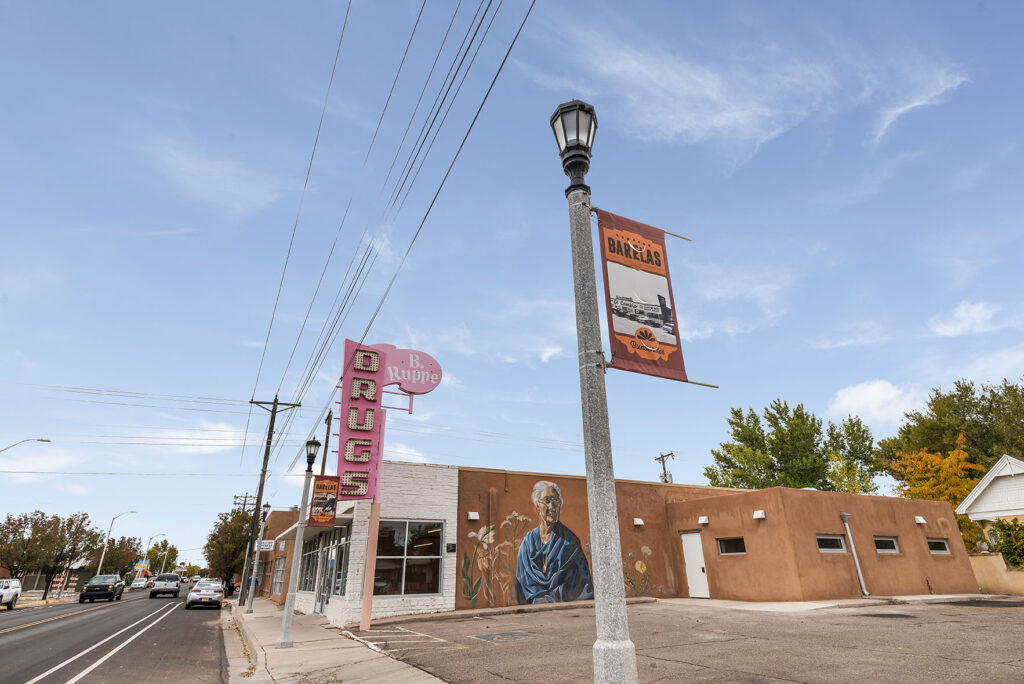 A view from the Street of the B. Ruppe Drugstore that Homewise redeveloped
A view from the Street of the B. Ruppe Drugstore that Homewise redeveloped
Topics Discussed:
· All-Electric Design
· Climate Resilience
· Community Displacement
· Community Wealth Building
· Cultural Resilience
· New Market Tax Credits
· New Mexico’s housing shortage
· Solar Power
· Water Conservation
Resources:
El Camino Crossing
Blueprint for Greening Affordable Housing, Revised Edition
Homewise
New Mexico’s Housing Shortage for Low Income Renters – Video, KRQE
Pandemic adds strain on Santa Fe’s Housing Crisis – Video, The Santa Fe New Mexican
The Ruppe – B. Ruppe Drugstore Building
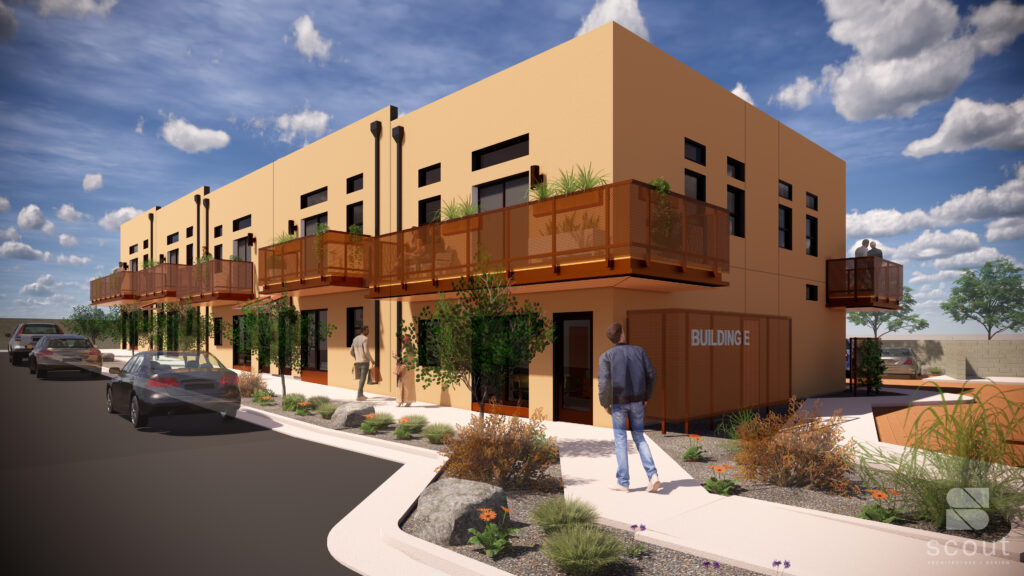
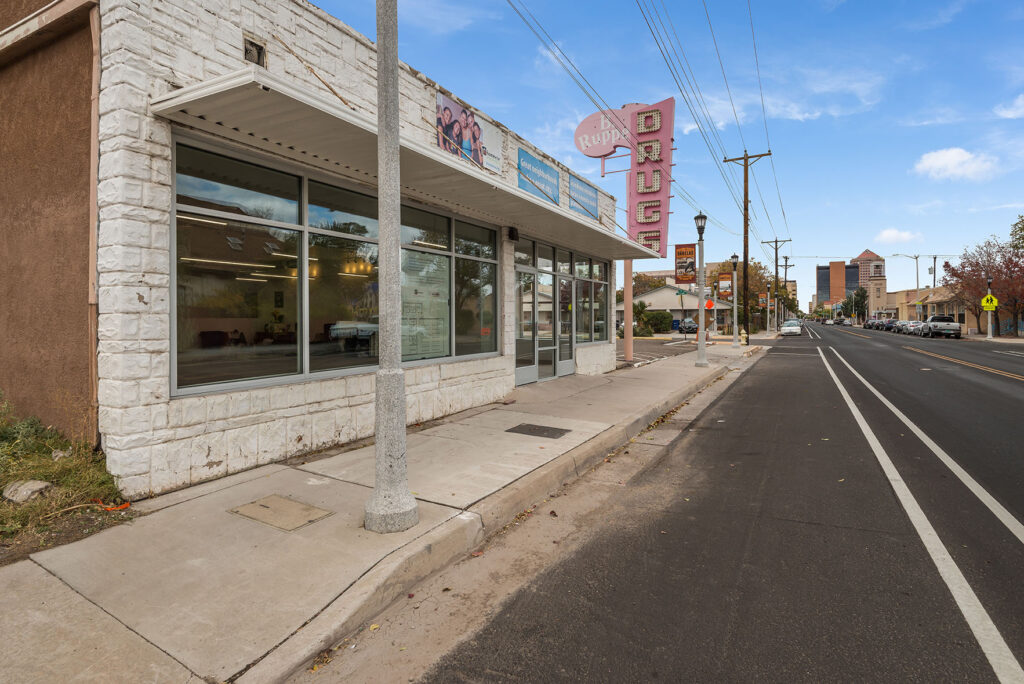
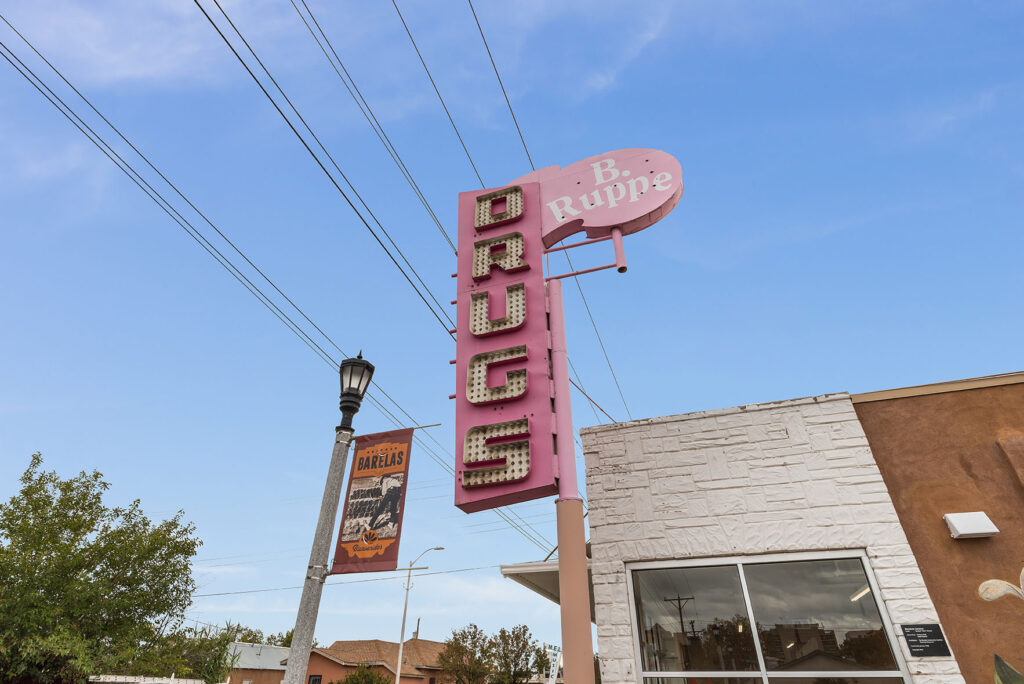
Rendering of El Camino Crossing and more shots of the Ruppe
[Intro Theme Music]
KIMBERLY VERMEER: Hello, I’m Kim Vermeer! Welcome to the Green in Action Podcast, where we share stories of green leadership in affordable housing. In this episode, we’re going to explore what the housing crisis looks like in New Mexico, and what green leaders at Homewise are doing to meet it.
First, let’s hear from local voices.
JAMI SEYMORE: Good evening. The housing shortage for low-income renters is a problem the state of New Mexico is no stranger to. But the issue is heightened due to the economic downturn caused by the Covid-19 pandemic.
THE SANTA FE NEW MEXICO: The New Mexico Coalition to end homelessness estimates the city is short of affordable housing by 5,000 units.
JAMI SEYMORE: Finding an affordable place to stay is even more difficult than before. A report from the National Low Income Housing Coalition draws on data from 2019, showing this has been a problem in New Mexico for years.
KIMBERLY VERMEER: As these clips from KRQE Channel 13 News and the Santa Fe New Mexican tell us, Santa Fe, New Mexico is a city with a real housing crunch. As a national vacation destination, Santa Fe is in quite the bind: the tourist industry that keeps the local economy going also makes it prohibitive for residents to buy homes.
In Santa Fe, the available, well-located housing is bought up by out-of-towners. What’s left is often poor quality, inconveniently located, and expensive. And much of the rental housing is used as vacation rentals, only available to residents in the off-season. That leaves locals looking to buy with two bad options: buy an older home in poor condition to stay local, or buy a newer, better-quality home, but far from their neighborhood.
CARL DAVIS: 53% of the workforce in Santa Fe commutes from outside of the city limits. And that’s a result of the high housing costs. The supply was so low, additional housing was needed in order to maintain affordability, the basic supply and demand picture. There was not enough supply and people were being forced out of the city.
KIMBERLY VERMEER: Meet Carl Davis.
CARL DAVIS: I’m the Construction Manager for the Community Development Department at Homewise.
KIMBERLY VERMEER: And Carl’s colleague.
DANIEL SLAVIN: My name is Daniel Slavin. I’m a Senior Director of Real Estate Development with Homewise.
KIMBERLY VERMEER: In this episode of Green in Action, Carl and Daniel share how Homewise, a Santa Fe-based non-profit housing organization, grew to meet this challenge and how their commitment to green guided their approach.
Communities were being displaced. Homewise realized that they couldn’t meet the city’s evolving housing needs without their own organizational transformation. Let’s go back to where they started.
[Musical Transition]
KIMBERLY VERMEER: For many years prior, Homewise operated in a traditional role as a CDFI, or Community Development Financial Institution.
DANIEL SLAVIN: We’re a mortgage lender and loan servicer for our community and through our training, we’re able to basically put together our mortgage financing for our customers.
KIMBERLY VERMEER: As Daniel said, initially, as a CDFI, Homewise tried to solve the lack of local resident homeownership with homebuyer education and mortgage support for low-income clients.
DANIEL SLAVIN: Homewise has a rich background and history here in Santa Fe, New Mexico. We started over 30 years ago doing home-ownership counseling and there was a problem of generations getting priced out of their homes in Santa Fe. And we wanted them to be able to do home improvements and also be able to stay in their homes.
CARL DAVIS: Our work is really in response to that need to the need of working and middle class folks having a space within the city, the market in general has not provided that space for them.
KIMBERLY VERMEER: As the housing problem got worse and worse, they realized that their business model of educating potential homebuyers and providing mortgage loans was not keeping up with the market pressures. It was time to think about supply side.
DANIEL SLAVIN: We believe in creating homeownership to help people build sustainability and wealth. We’ve used home ownership as something in Santa Fe where rental rates have just skyrocketed in the last 10 years. And the best economic stability you can have in this town is to own your home.
KIMBERLY VERMEER: Homewise wanted to prevent displacement and build community wealth. They were rethinking their strategy for how to do that when the recession hit at the end of the aughts.
A developer had purchased a seven-acre vacant site in the less developed Southwest area of the city, and had gotten it permitted for redevelopment. But when the housing market crashed and the original buyer backed out, Homewise saw their opportunity. They bought the land and decided to take a leap into development, envisioning what would become the El Camino Crossing project.
[Musical Transition]
KIMBERLY VERMEER: Homewise saw the El Camino Crossing project as a chance to “make the market” in an underinvested, lower-income area that was beginning to experience redevelopment pressure. They knew that to make El Camino Crossing a success, they had to go all-in.
El Camino Crossing is a subdivision with 40 single-family homes, and 35 condo and live/work units, plus commercial space, and a playground.
DANIEL SLAVIN: This is a different capital outlay for us too, as you build a home and sell it, is much different than building 12 or 13 or 16 homes in one time. So it’s a different transaction type of development.
KIMBERLY VERMEER: When they started construction in 2017, Homewise had three main goals for El Camino Crossing: to create a walkable and bikeable community center where there wasn’t one before, to provide work/life flexibility for residents, and to build high quality green affordable housing.
El Camino Crossing is located off Agua Fría, part of the historic Camino Real route and near a major commercial intersection at Siler Road.
DANIEL SLAVIN: The real challenge was, OK, residential housing is great, but the only people who can walk to a restaurant in Santa Fe are those who are lucky enough to live down near the plaza, because it’s not a walking community besides that. Maybe it was designed for horses back in the day, it’s not made for a lot of walking. It’s made for more of the car traveling. We were going to try to create a subdivision and with the mixed-use be able to create some commercial entities on Auga Fría, on the main road, that people could finally walk to. And so I think it was the holistic uses of the community that really attracted Homewise. And it was a first for us, it was our first mixed use development that we’ve done in Santa Fe.
KIMBERLY VERMEER: Daniel’s vision included a new commercial magnet for the community – creating a “there,” there. Carl added,
CARL DAVIS: How to make a community in our development, not just a series of houses on a dead-end street? But actually, the design is intended to foster community and foster neighborhood feel as well as have some amenities in the commercial and live-work spaces that are on Agua Fría.
KIMBERLY VERMEER: Artists and small businesses are integral to Santa Fe’s “resort-centric” economy. In the El Camino Crossing development, Homewise built on those community strengths to meet their second goal, flexibility for residents.
CARL DAVIS: This project has some live-work units and some commercial storefronts what we’re hoping will probably be a restaurant or something. So this development has its own gravity. It will have its own resources to some degree, where people can walk from their home down to a restaurant, or into one of these live-work spaces, you might have some services as well.
KIMBERLY VERMEER: Doubling down on the mixed-use amenities, El Camino Crossing offers residents flexibility in how to use their space. Many of the homes include a “casita,” which is a small building, or “little house,” that residents can choose to use as a garage, or as a workshop, artist studio, a business space, or even as an Accessory Dwelling Unit, or ADU, to create additional housing for family members.
DANIEL SLAVIN: The flexible uses that are going to be a part of the community was definitely a guiding principle when we actually designed the single-family. So we have a rear load detached product which basically allows you to do a half garage, garage portal, casita. So we have an art therapist using half a casita for business use while living in the front. So we really try to focus on the opportunity of the uses and harness that in our design.
[Transitional Music]
KIMBERLY VERMEER: That flexibility supports Homewise’s goal to create a development that offers residents stability and opportunity.
After the break, we’ll discuss Homewise’s commitment to sustainability at El Camino Crossing.
[Music continues]
KIMBERLY VERMEER (advertisement): I hope you’re enjoying this episode, and our first season of Green in Action! We’re already getting excited for season two, and we’re looking for ideas.
Are you a green building practitioner doing innovative and vital work? Or do you know of people, projects, or programs at the forefront of sustainable and equitable community development that our listeners should learn about? Submit ideas for potential future episodes of the pod at our website, urbanhabitatinitiatives.com. We look forward to sharing more great stories in season two, and we’d love for yours to be one of them!
[Music fades out]
Now, let’s get back to the show.
KIMBERLY VERMEER: Carl and Daniel understood that green building is fundamental to sustainable home ownership, especially in an arid desert climate like New Mexico.
DANIEL SLAVIN: We have low water supply. We have a high solar possibility and efficiencies. And so it makes it, in a number of ways, the right spot to be concerned about your environment.
KIMBERLY VERMEER: Their third goal was to build homes that were resilient to New Mexico’s climate concerns.
Homewise pursued green certification programs as a pathway to achieve their resilience and sustainability goals. El Camino Crossing received LEED for Homes Gold as well as a Build Green New Mexico Gold certifications.
CARL DAVIS: We always do the best we can with the housing stock to make it as sustainable and resilient to climate change as possible.
KIMBERLY VERMEER: Drought resilience was a priority: the development saves 41% more water than standard homes through a combination water efficient indoor fixtures like washing machines and toilets, and through xeriscaping for the yards, which is low-water use landscaping. Water conservation is good for the environment, but it also helps keep bills low for residents.
CARL DAVIS: We are hoping to create the highest quality and most affordable housing we can for our clients, and one of the great benefits of having an energy efficient home is that you have low cost of operation as well as a healthier indoor air quality. And one way we can help our clients is to create housing that we know is sustainable, housing that we know is healthy, and housing that we know have a low cost of operation going forward.
KIMBERLY VERMEER: Homewise decided to go all-electric at El Camino Crossing! And they included solar PV, or photovoltaic, panels with every home: four panels for the single-family homes and two panels for each condo.
CARL DAVIS: I’m most proud of having the courage to have an all-electric product that incorporates a solar array. They’ve got high efficiency heating and cooling and ventilation systems in there. Any of these homeowers going forward can add on to their solar array to move towards a net zero housing stock I think that is where the housing market in the future will be going. But I think Homewise showing leadership in that aspect of having an all-electric, high efficiency, small, shared wall space in Santa Fe is something that I’m really proud of.
KIMBERLY VERMEER: Building homes with solar and keeping them affordable for low- and moderate-income buyers is a challenge. With their experience as a CDFI, Daniel used a clever strategy to do this, using New Markets Tax Credits, a federal investment program targeted to low-income communities, to generate the funds needed for the new owner’s mortgages.
DANIEL SLAVIN: We were able to secure close to 13 million dollars in New Market Tax Credits for fifty-three front doors, so 40 of the residential homes and 13 of the condo units. And so it’s been a major success. It’s allowed us basically to take that subsidy, to put it into deferred loans and to have over 35 percent of the community be under an average median income of 80. And it’s been a major success.
KIMBERLY VERMEER: Typically, solar panels for single-family homes are only an option for those who can afford it. Daniel’s innovative use of the New Markets Tax Credits meant that they could offer homes with solar panels for moderate-income homebuyers. This is a major achievement!
DANIEL SLAVIN: I’m definitely proudest of a full execution and compliance with the New Market Tax Credits. I know it’s very geeky, but my background is finance and accounting, so that’s how that works.
KIMBERLY VERMEER: From innovative green strategies to clever funding arrangements, Homewise keeps pushing the envelope.
After the break, we’ll discuss how they applied lessons from El Camino Crossing to their work in Albuquerque.
[Transitional Music]
KIMBERLY VERMEER: Another line of work at Homewise is single-family acquisition/rehab/resale. Most of this work has been in Albuquerque, which is a different housing market than Santa Fe, with different pressures. So, Homewise’s strategy there looks a bit different.
CARL DAVIS: In the Albuquerque area, we’ve been focusing not as much on new development projects, but on smaller acquisition rehab, single family home basically in our targeted neighborhoods, identifying homes that have been vacant or abandoned, maybe boarded up by the city, or that neighbors have identified as a problem causing trouble for the neighborhood. So we try to focus on those so we can have the dual impact of increasing the housing stock where we’re working, but also stabilizing the neighborhoods we’re working in, too.
KIMBERLY VERMEER: Green strategies guide Homewise’s rehab work too.
DANIEL SLAVIN: So I like to think of my work when I go into a house I think in this matrix of health and safety, durability, energy efficiency, and comfort, in that order.
KIMBERLY VERMEER: In Albuquerque, as in Santa Fe with El Camino Crossing, Homewise’s commitment to their mission led them to evolve one home at a time to focusing on block-by-block redevelopment.
DANIEL SLAVIN: You do take these leaps, you do stretch yourself under your current scope of your daily tasks. And then all of a sudden, we’re doing 16 infill townhomes in Albuquerque. So, stretching is tough in the current moment, but once understood, you understand your capabilities, it just creates more opportunities. And so that’s our always biggest take away.
KIMBERLY VERMEER: Homewise continued their shift to becoming a developer and owner in Albuquerque. One thing they learned from their experience at El Camino Crossing was the need for good quality commercial space to anchor a community. This has expanded their vision for redevelopment.
CARL DAVIS: In the neighborhoods where we focus, we’re creating a full ecosystem of opportunity, whether it’s for small businesses to have a space to operate. An opportunity to get into the market and serve the communities that we’re working in. We sort of marry the homeownership bread and butter of Homewise with also a little bit of economic development and commercial redevelopment in our targeted neighborhoods.
KIMBERLY VERMEER: In one recent project, Homewise acquired vacant commercial property for historic preservation and commercial redevelopment, in this case, a drugstore that had been a vital part of the community since it had been founded in 1883.
CARL DAVIS: The B. Ruppe Drugstore, which is a beautiful old historic drugstore, sort of the holistic medicine center that had been in the community for decades that had fairly recently stopped operating and the local community groups had identified it as a really important cornerstone to the cultural and economic vibrancy of the neighborhood, so we acquired the B. Ruppe Building and completely renovated again, updated it, making sure the plumbing was functioning and make sure the sewer lines were cleared out and the electric was safe, and there was a new high efficiency HVAC system, new storefront windows. And then once that renovation was complete, we opened it up to community use.
KIMBERLY VERMEER: Homewise started by activating the space as a free pop-up site for community events.
CARL DAVIS: Any community member, any community group, could sign up for free and utilize the space. We had a number of community events, including like, historic photos from the neighborhood. You know, a group of folks had like a nice photo exhibit and different art exhibits.
KIMBERLY VERMEER: They eventually secured a permanent tenant, the Secret Gallery, and now this local artist collective where craftspeople sell their goods is reactivating this historic community space.
CARL DAVIS: When we began looking at our work in Albuquerque what we saw is that we have a neighborhood, a vibrant, historic neighborhood that has a lot of deep cultural roots and deep cultural pride. And then a commercial corridor that had an incredible amount of potential and we wanted to support the community at large by targeting a few commercial properties and our hope is that those would be catalysts for other outside investors in other businesses to repopulate the 4th Street corridor in Barelas.
KIMBERLY VERMEER: Homewise focused on thinking at a neighborhood scale for long-term community impact. In doing this, their definition of sustainability stretched further to include a focus on cultural resilience as well as climate resilience. But what is cultural resilience?
Coming up, our conversation continues.
[Music fades out]
CARL DAVIS: When you start expanding the understanding of what cultural resiliency and neighborhood resiliency, that’s how we’re referring to the commercial redevelopment work we’re doing. So people don’t have to commute long ways to their to their jobs necessarily, or they might have closer access to go grocery shopping. And all these things we know are important for a sustainable neighborhood and a sustainable community.
KIMBERLY VERMEER: In addition to revitalizing economic centers, part of cultural resilience is preventing displacement by ensuring quality healthy homes for existing homeowners, as well as new ones.
CARL DAVIS: We’re really working hard to identify and reinforce and expand that anti-displacement strategy in our target neighborhoods. So we have identified some funding and are looking for more for an energy efficiency deferred home improvement loan for the targeted neighborhoods we’re working in. It could be that a family’s been in their home for a number of generations and there’s a fair amount of deferred maintenance. Maybe they need a new roof, or maybe the furnace is unsafe, or their water heater just blew up. This deferred loan product where people could access that for energy efficiency improvements, including solar, including insulation or air sealing, new HVAC systems. And the intention of that is to make it so that the existing people that have deep roots in the neighborhood that are culturally bound to the community can stay in the community while there’s outside economic forces potentially pushing them out.
KIMBERLY VERMEER: By funding high priority maintenance and quality-of-life projects, Homewise makes it possible for residents to maintain ownership of their neighborhood. That’s both literally, in terms of continuing to own their homes, and also socially, to hold onto a place that’s culturally theirs.
CARL DAVIS: A lot of that is in response to feedback we’ve gotten from the community that this is something that is very important that they don’t feel like there’s enough resources for them to stay in the neighborhood if they want to. And so, we’ve in the recent past just really tried to shift our focus to make sure that we’re identifying how we can help folks in any way possible.
KIMBERLY VERMEER: Being responsive to needs expressed by the people who’re most affected by displacement is the same impulse that led Homewise to take on the challenge of neighborhood redevelopment in Santa Fe and Albuquerque.
DANIEL SLAVIN: A lot of the times, we can work with the city and that makes people feel heard. And I think that is Homewise’ secret sauce sometimes is making sure that we’re a good steward to the community. And that is professionally one of the most enjoyable things I get to take away from my time with Homewise and the work that we’re doing here.
KIMBERLY VERMEER: Homewise has been on a journey! It has expanded their definition of sustainability and reinforced their commitment to green strategies.
Along the way, Homewise grew from being a well-respected community lender to being a leader of community stewardship. They realized that by acting as a developer and owner of projects, they could better pursue their community goals. That requires more than good quality housing for a few families at a time: it calls for community transformation.
CARL DAVIS: The leadership at Homewise has shown repeatedly an appetite to take risk and to move beyond the comfort level, both in Santa Fe and in Albuquerque. And Homewise’s willingness to take a look at what the market needs were and be responsive and be a leader in the market. That flexibility and that willingness to take risks as an organization really takes all the limits off of what we might be able to accomplish in Albuquerque, Santa Fe, but also statewide in New Mexico.
[Outro Music]
KIMBERLY VERMEER: Thank you to Carl Davis and Daniel Slavin, for sharing Homewise’s transformative work. If you would like to learn more about Homewise, visit their website: www.homewise.org.
You can learn more about Homewise and El Camino Crossing in my book that I wrote with Walker Wells, Blueprint for Greening Affordable Housing. The book is available from the publisher Island Press, as well as at Amazon and Barnes & Noble. Or, you can search for “Blueprint for Greening Affordable Housing” at www.Bookshop.org, to support an independent bookstore near you.
At the top of the show, we played clips from Jami Seymore on a KRQE Channel 13 News segment, “New Mexico’s Housing Shortage for Low Income Renters,” and the Santa Fe New Mexican video article, “Pandemic adds Strain on Santa Fe’s Housing Crisis.” You can find links to those pieces in our show notes at urbanhabitatinitiatives.com. On our website you can also submit project ideas for season two of the pod! We’re planning now, and we’d love to hear about the amazing green developments in your community!
Connect with us! We’re on Twitter @UHIPodcast, LinkedIn, and we have an email list you can subscribe to, to be the first to know when new episodes drop.
Thank you to everyone who has subscribed to our show and rated us on Apple Podcasts. It helps spread the word about our show! Thanks for listening! This episode was written and produced by Kimberly Vermeer and Klara Kaufman. Sound engineering and audio editing by Carl-Isaak Krulewitch. Music by Matt Vermeer. Kimberly Vermeer is the Executive Producer. Green in Actionis an Urban Habitat Initiatives production.
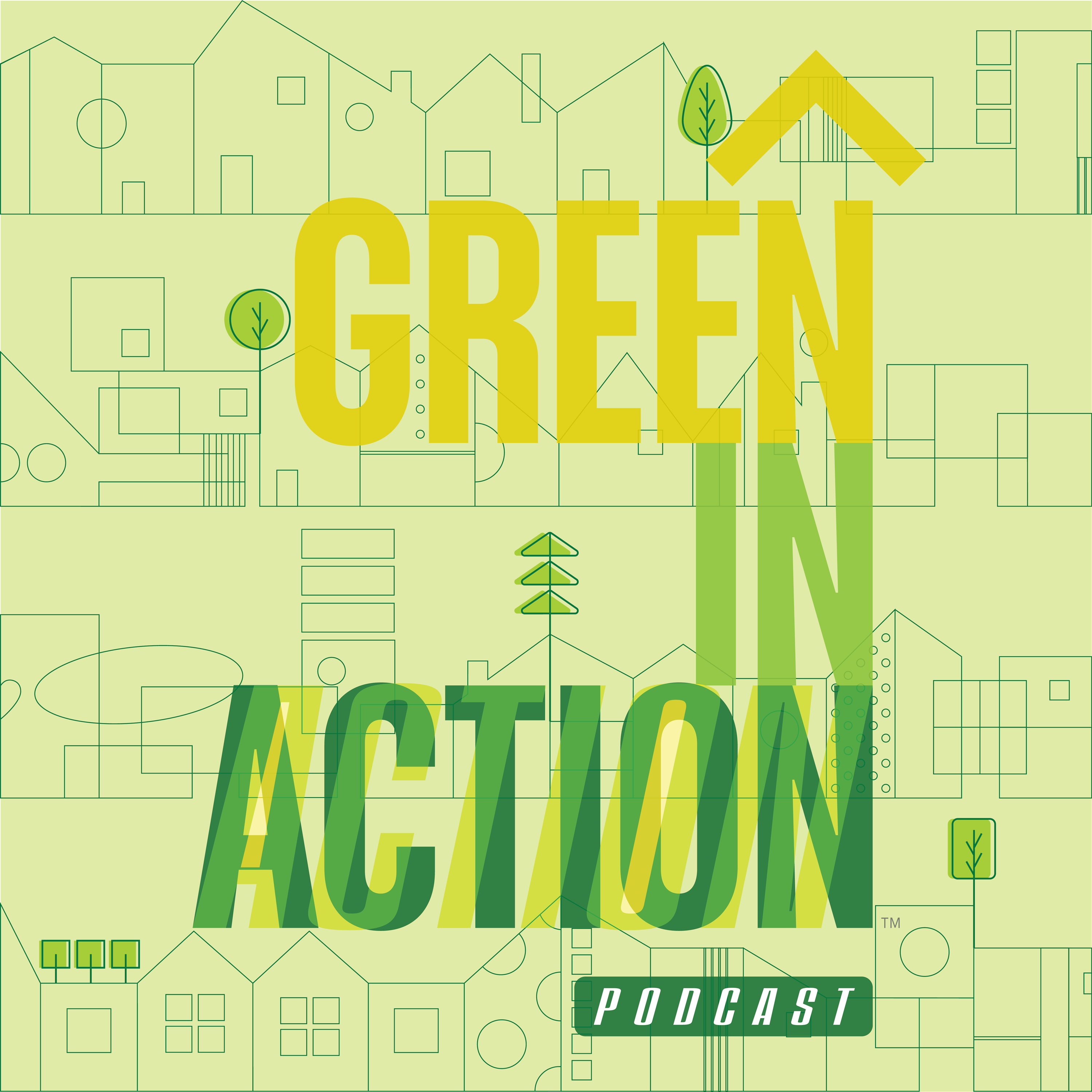
In this episode of the Green in Action podcast, host Kimberly Vermeer speaks with Dana Bourland, Enterprise Community Partners alum, founder of the JPB...
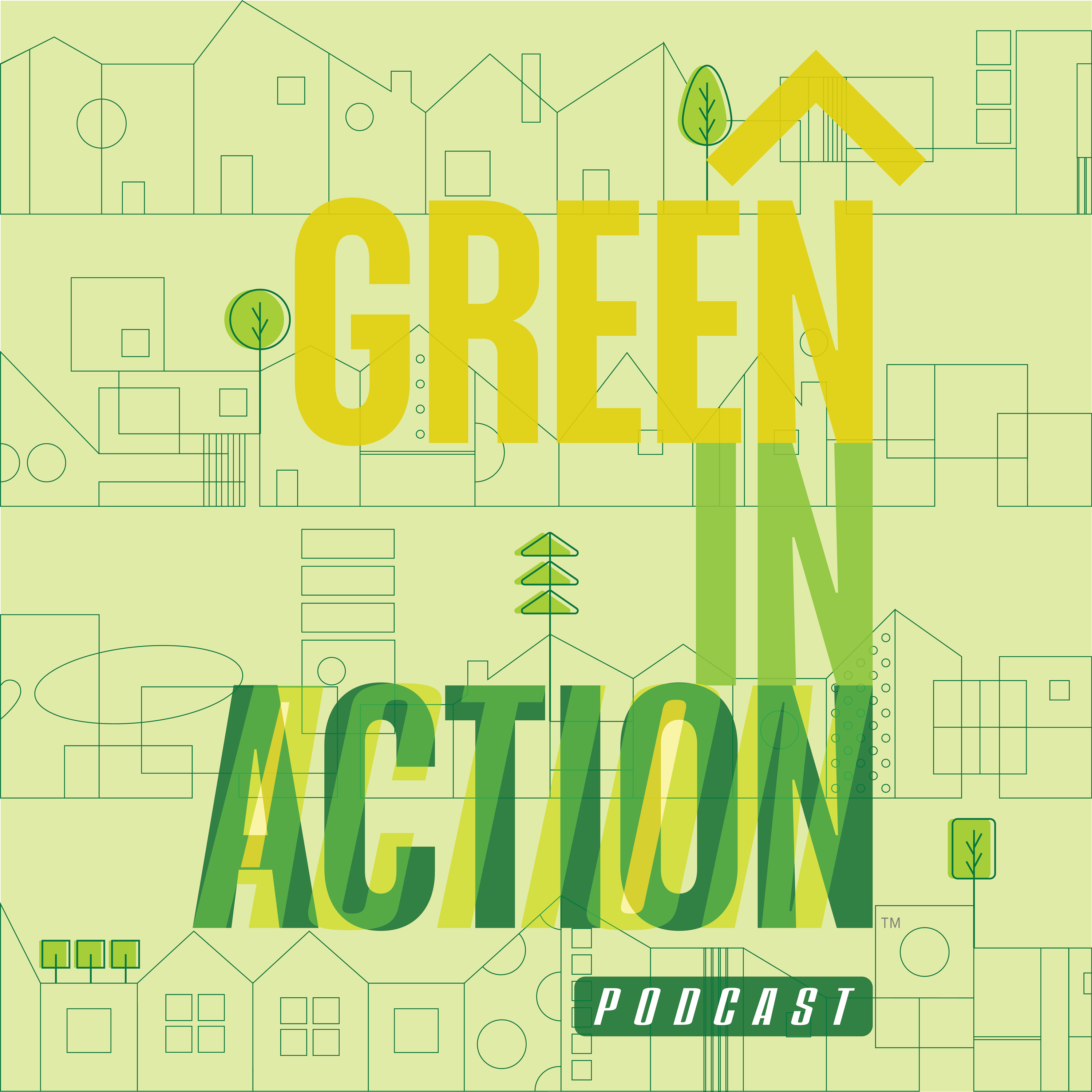
The view from the Alewife neighborhood of Cambridge from the roof deck of Finch Join Host Kimberly Vermeer for the story of Finch, the...
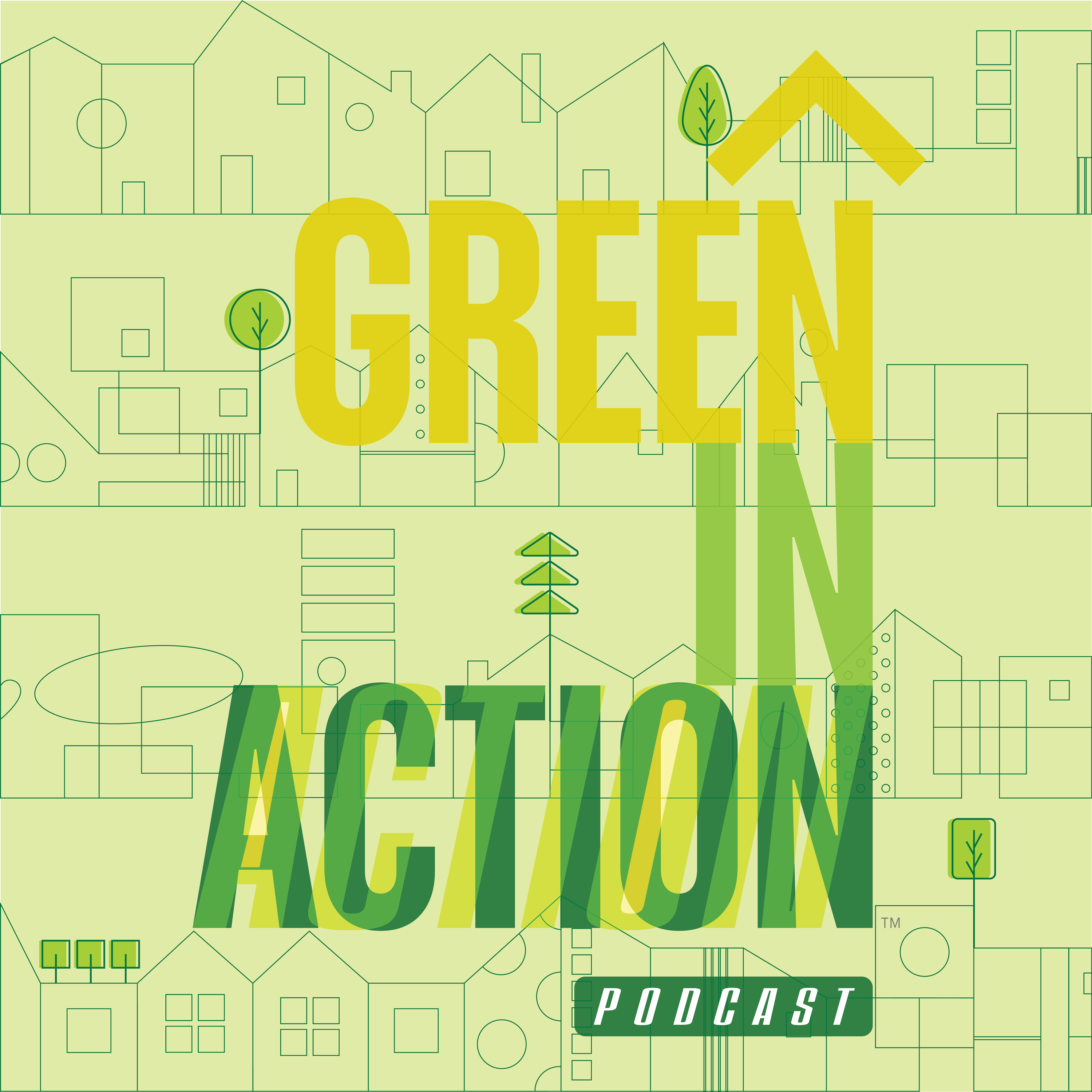
Welcome to the Green in Action podcast! In each episode, host Kimberly Vermeer, President of Urban Habitat Initiatives, shares stories of green leadership in...